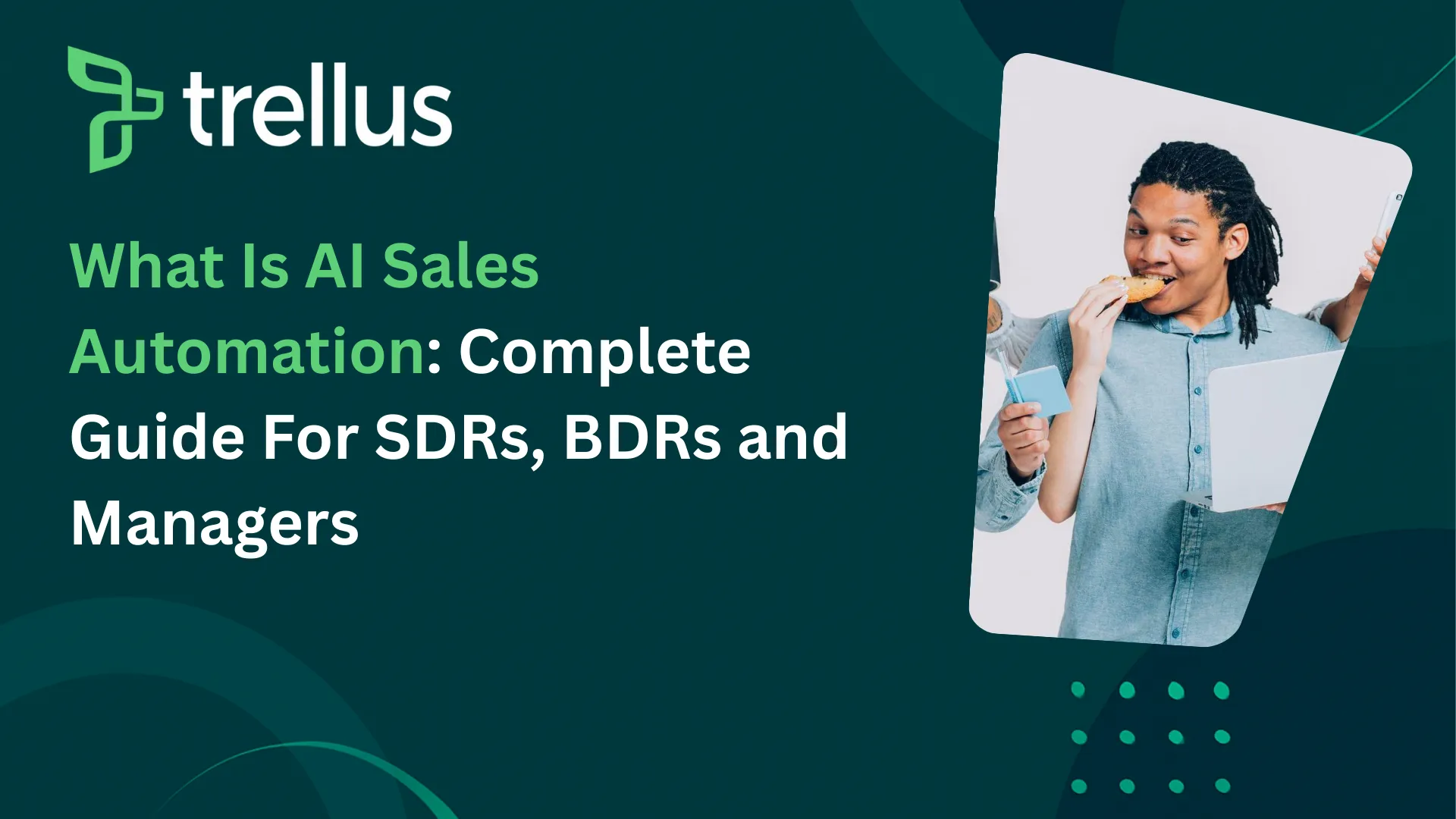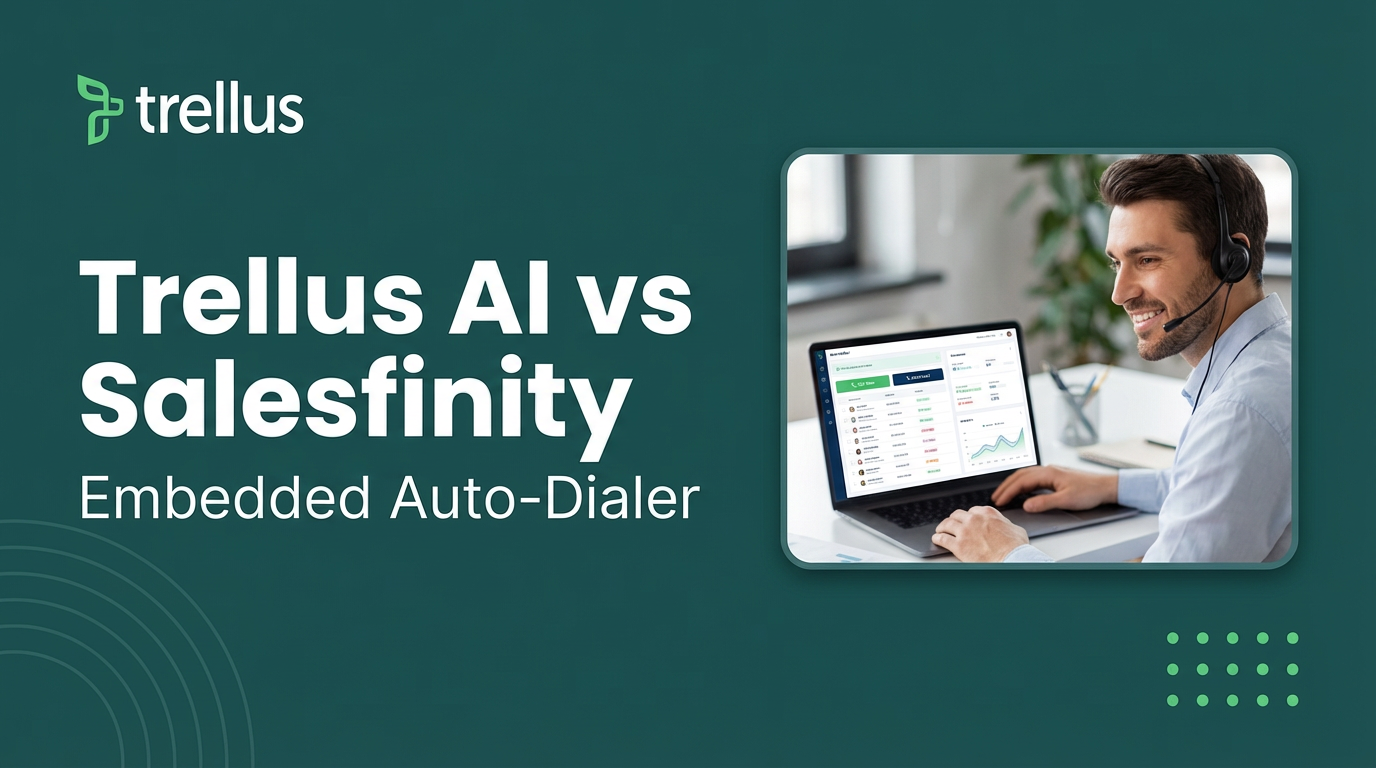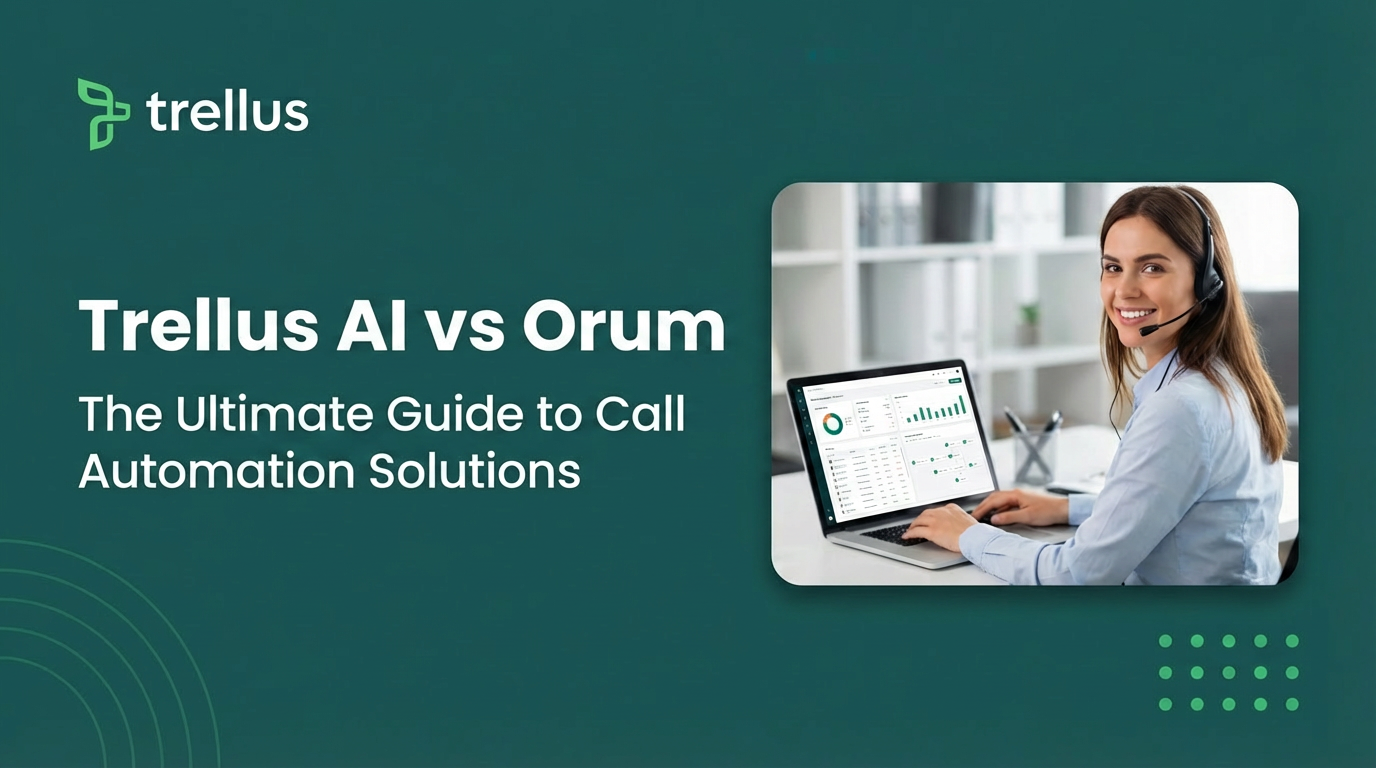
Our Top Picks


Real-Time AI coaching is a dynamic tool designed to assist sales agents during live customer interactions.
Over the last few weeks, we have talked at length about different types of real time agent assistance software.
Of course, the analogies were a little different, because we would mention those programs as ai cold calling software, best auto dialers, parallel dialers, and real time ai calling programs.
Nonetheless, if any program has some sort of AI assistance embedded in it, you can, to some extent, dub it as a real time agent assist software.
So that’s that then.
The problem is that not every tool is worth it.
We get them by the dime a dozen these days, and the biggest challenge is that agent assistance software comes with setbacks.
These limitations need to be circumnavigated with the intervention of some other intermediary third-party app. You either need to switch to completely different software or use programs in combination with real-time agent assistance programs.
This post highlights different aspects of real-time agent assist tools, including their benefits, challenges, and other aspects.
The idea is to create awareness so that you can eventually use a program to your advantage that benefits your business entirely.
So, let’s get started.
Benefits of AI-Assisted Outbound Lead Generation Through Real Time Agent Assistance Tools

Some of the main or most common benefits of using AI-assisted real time agent software – and that too, in an outbound lead generation campaign, are highlighted below.
- Efficiency Boost: Through the automation of routine tasks, AI frees up agents to focus on more complex issues. This translates to more leads being handled in less time.
- Consistency: AI provides uniform responses and guidance, ensuring that customer interactions maintain a high standard of quality.
- Data-Driven Insights: Real time agent assistance tools can analyze customer data to offer personalized suggestions, improving the chances of converting a lead.
- Reduced Training Time: New agents can quickly come up to speed with real-time coaching, shortening their learning curve.
Most Common Challenges of Real Time Agent Assist Platforms, Tools and Vice Versa

While AI is effective in straightforward interactions, complex scenarios pose significant challenges.
The way artificial intelligence is used, incorporated or embedded in the program’s infrastructure directly influences the end result.
So, a substandard program with subpar ai will always result in the tool’s capacity to interpret nuanced emotions or adapt fluidly. Furthermore, higher conversions, better caller experience and real time cues during ongoing calls should be the least of your expectations.
In addition to that, many inquiries that require deep technical knowledge or are specific to niche industries often necessitate human intervention.
As a result, it highlights the need for a sophisticated balance between AI efficiency and human empathy to ensure success in these challenging interactions.
Understanding these complexities sets the stage for exploring limitations and strategies to optimize AI in scenarios where the human touch remains indispensable.
Limitations of Real-Time Agent Assist in Complex Scenarios

Real-Time Agent Assist tools excel in processing information quickly, but they stumble when it comes to understanding the subtleties of human emotions.
While AI can recognize basic emotional cues like anger or happiness through tone analysis, it often misses the deeper, more complex emotions.
These emotions may be critical in lead generation, where understanding a prospect's underlying feelings could make or break a deal.
Navigating Unexpected Conversations
AI-driven systems are trained on predictable patterns.
However, conversations can take unanticipated turns, especially with sophisticated customers.
The rigidity of AI frameworks means they may flounder when faced with off-script queries or unusual customer logic, leading to unsatisfactory interactions and possibly losing valuable leads.
Handling Technical and Specialized Inquiries
Another challenge is the handling of highly technical or industry-specific questions. AI models generally rely on extensive training data, and if the data does not cover particular industrial jargon or technical specifics, the system's guidance can be superficial.
This limitation can frustrate customers seeking expert advice, leaving humans to pick up the slack.
Identifying Complex Customer Issues
Outbound lead generation can encounter tricky situations.
These often involve customers with specific needs that AI may find hard to interpret. Examples include:
- Highly Emotional Interactions: Customers expressing frustration or excitement can overwhelm AI, as it struggles with emotional subtleties.
- Industry-Specific Jargon: Technical language requires specialized knowledge that AI may not have by default.
- Unexpected Questions: When a lead poses an unanticipated question, AI tools might falter in originality and depth.
Understanding these scenarios is key to optimizing how AI and human agents collaborate to manage complexity.
Red Flags Indicating the Need for Human Intervention
There are signals when it's time to move from AI to human assistance:
- Repeated Inquiries: If a lead asks the same question multiple times, it suggests AI isn't meeting their needs.
- High Emotion: Customer interactions that indicate frustration or confusion can escalate without human empathy.
- Unique Requests: Special requests that go beyond AI’s programmed capacity require direct interaction to resolve effectively.
Recognizing these red flags allows for timely human intervention, preventing potential fallout and ensuring smoother interactions.
Balancing AI and Human Expertise
The goal is a harmonious workflow where AI handles routine tasks while humans tackle the complexities. Here’s how to strike that balance:
- Task Allocation: AI can manage data analysis and common inquiries, freeing humans for nuanced conversations.
- Collaborative Tools: Use platforms that allow seamless AI-human transitions, ensuring the customer experience remains consistent.
- Ongoing Training: Human agents should continually refine skills in emotional intelligence and adaptability.
Blending AI efficiency with human insight crafts a customer experience that is both effective and empathetic.
This approach to identifying complex customer issues sets the stage for exploring effective human intervention strategies, highlighting when and how to transition smoothly.
Human Intervention: When and How
Real-time AI assistance has undeniable benefits but isn't foolproof, especially with complex customer interactions.
Immediate human intervention becomes critical in situations like emotional escalations, when AI can't empathize or de-escalate effectively.
Another red flag is when conversations veer into territory requiring extensive industry knowledge or niche expertise.
Moreover, if customers express dissatisfaction with AI-generated responses or repeat queries, human takeover may prevent churn and foster trust.
Seamless Transition Strategies from AI to Human Agents
Ensuring a smooth handoff between AI and human agents is crucial for maintaining service quality.
On that note, one of the best strategies is to provide real-time notifications to agents when intervention is needed.
Training Human Agents to Complement AI Capabilities

To harmonize AI efficiency with human empathy, agents need specialized training.
This includes understanding AI limitations and strengths, and knowing how to step in when AI assistance falls short. Role-playing complex scenarios and learning customer emotion cues can help agents adapt swiftly.
Agents should also be trained in using insights gleaned from AI—like pattern recognition or customer preferences—to enhance interaction quality.
While AI is a powerful tool in the outbound lead generation process, human expertise remains invaluable in navigating complexity.
Optimizing AI Tools for Complex Scenarios
To elevate AI performance in tricky scenarios, infusing models with industry-specific knowledge is crucial.
Whether it's finance's intricate terminologies or healthcare's regulatory details, an AI model enriched with relevant data becomes more insightful and intuitive in its interactions.
Implementing Continuous Learning Mechanisms
AI must evolve constantly to stay effective. Incorporating continuous learning mechanisms allows AI systems to adapt based on new data and interactions.
It typically involves regularly updating models with recent developments and insights from past conversations. Techniques such as reinforcement learning can help AI systems improve their decision-making processes, ensuring they remain sharp and reliable over time.
Integrating Human Feedback Loops
Human feedback is essential in refining AI responses, especially in complex situations.
Establishing robust feedback loops where agents can review AI interactions, gives way to valuable insights, which can be extracted and used to adjust models.
This iterative process not only enhances AI's accuracy but also builds a collaborative relationship between human agents and technology, leading to more effective customer engagement.
Best Conversion Tactics for Complex Customer Issues

Tailoring Strategies for Challenging Leads
When it comes to converting challenging leads, personalized strategies are key.
It's essential to understand each lead's unique needs and pain points to craft a tailored approach. Start by analyzing data from previous interactions—this can offer vital insights into their preferences and objections.
Customize pitches that directly address these insights, ensuring that the message resonates with the prospect on a personal level.
Using AI Insights, Data and Analytics
AI can be a powerful ally in informing human-led conversion efforts.
Use these insights to develop targeted responses and more effective action plans.
For instance, AI can pinpoint common objections and suggest best-practice responses, enabling human agents to engage more confidently and competently. This synergy helps in creating a dynamic conversation flow, enhancing the chances of conversion.
Balancing Persistence with Sensitivity
Persistence is vital in outbound lead generation but must be balanced with sensitivity to avoid alienating potential clients.
AI systems can help agents recognize when to push forward and when to ease back.
They can track indicators of interest or frustration, guiding human agents in adjusting their approach accordingly.
Being sensitive to a lead’s mood and behavior increases the likelihood of a positive interaction, fostering trust and engagement.
As companies refine their strategies, the interplay between tailored campaigns and AI insights promises more effective and empathetic customer interactions.
Measuring and Improving Performance
Key Performance Indicators for Complex Scenarios
Navigating through complex customer issues in lead generation requires precise performance tracking. Identifying the right key performance indicators (KPIs) is crucial.
To start off, you need to consider the response accuracy of AI in handling intricate queries. Is AI consistently understanding the context?
Next, evaluate the transition smoothness from AI to human agents. How seamlessly does the handover occur when needed?
Finally, measure customer satisfaction and engagement, as these insights help refine overall strategy.
Analyzing AI and Human Agent Performance
Analyzing performance involves digging deep into the data gathered from interactions.
Start by comparing AI and human agents' success rates in resolving complex inquiries.
Are there specific patterns where AI excels or struggles?
In addition to doing so, don’t forget to review feedback from both customers and agents. This analysis sheds light on where improvements are necessary and highlights training areas for human agents.
Implementing Targeted Improvements
Once performance data is gathered, it's time to act. Implement continuous learning algorithms for AI systems to adapt and improve over time.
Encourage human agents to attend workshops that enhance their skills, particularly in areas where AI might fall short.
Create a cycle of feedback between AI systems and human agents to ensure real-time improvements are happening. This collaborative effort can lead to a more robust and responsive lead-generation process.
Preparing for Future Challenges Concerning Real-Time Agent Assistance Software Technology
To stay ahead, organizations must proactively address anticipated challenges in outbound lead generation. This involves:
- Investing in continuous AI-learning systems that help models adapt more effectively to nuanced customer needs.
- Enhancing training programs for human agents, focusing on skills that complement AI, such as emotional intelligence and problem-solving.
- Fostering a symbiotic relationship between AI and human agents that leverages the strengths of both for optimal customer interactions.
Over time, if you were to incorporate these strategies, you can easily expect to bridge the gap between AI capabilities and human expertise, paving the way for more successful lead generation.


.jpeg)




